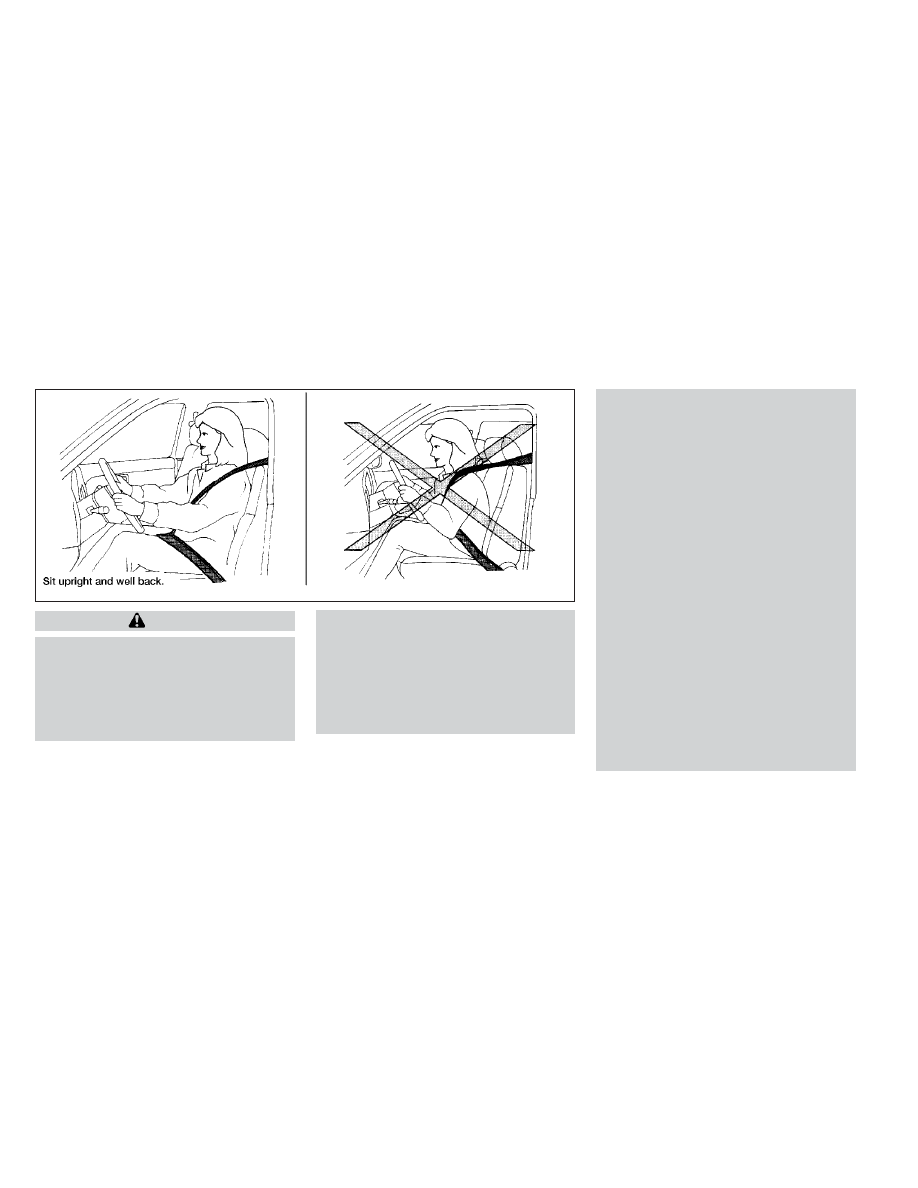Nissan Titan (2023 year). Manual in english - page 5

WARNING
•
The front air bags ordinarily will not
inflate in the event of a side impact,
rear impact, rollover, or lower sever-
ity frontal collision. Always wear your
seat belts to help reduce the risk or
severity of injury in various kinds of
accidents.
•
The front passenger air bag and front
passenger supplemental knee air
bag will not inflate if the passenger
air bag status light is lit or if the front
passenger seat is unoccupied. For
additional information, see “Front
passenger air bag and status light”
(P. 1-62).
•
The seat belts and the front air bags
are most effective when you are sit-
ting well back and upright in the seat.
The front air bags inflate with great
force. Even with the NISSAN Ad-
vanced Air Bag System, if you are un-
restrained, leaning forward, sitting
sideways or out of position in any
way, you are at greater risk of injury
or death in a crash. You may also re-
ceive serious or fatal injuries from
the front air bag if you are up against
it when it inflates. Always sit back
against the seatback and as far away
as practical from the steering wheel
or instrument panel. Always properly
use the seat belts.
•
The driver and front passenger seat
belt buckles are equipped with sen-
sors that detect if the seat belts are
fastened. The NISSAN Advanced Air
Bag System monitors the severity of
a collision and inflates the air bags as
needed. Failure to properly wear seat
belts can increase the risk or severity
of injury in an accident.
WRS0031
Safety-Seats, seat belts and supplemental restraint system
1-53